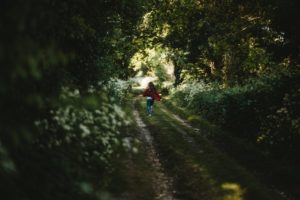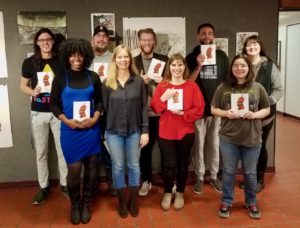Directed by KELLY REICHARDT
Based on the novel The Half-Life by JONATHAN RAYMOND
Review by HANNAH GERSEN

The plain title of Kelly Reichardt’s eighth feature film belies a richly–detailed period piece set in 1820s Oregon Territory. But before immersing you in the past, Reichart opens in the present, with a shot of a large industrial ship making its way down the Willamette River. Along a piece of undeveloped shoreline, a woman and her dog are walking when the dog’s playful digging uncovers a human skull. Curious, the woman continues digging to reveal two full skeletons lying next to each another. As is typical of a Reichardt movie, this action unfolds wordlessly but with attention to the sounds of the natural world: the chirping of nearby birds, the dog’s panting and scuffling paws, and the river flowing by. This quiet, observational approach makes the discovery of two skeletons feel interesting, rather than ominous. However, I must admit that what I found most arresting about this scene was a lightweight pink scarf that the woman was wearing tied around her neck in a loose bow. It was the only warm color in a scene dominated by grays, blues, and greens, and as the woman’s scarf fluttered in breeze, I felt that it, as well as the skeletons, had a secret meaning.
My question about the scarf was partially answered in the next scene, a close-up of dirty hands plucking mushrooms from a damp forest floor. At first I thought we were keeping company with the same woman who had exhumed the skeletons, but as the camera panned out to reveal the forager’s identity, I realized we had fallen back in time. The forager was a man with a scraggly beard, rumpled hat, and old-fashioned menswear made of sturdy brown cloth. Around his neck was a red kerchief so faded and dirty it appeared pale pink. This echo in costuming and gesture not only helps to connect the characters across time, but is also a gentle suggestion that our way of life might be more connected to the past than we realize.



















